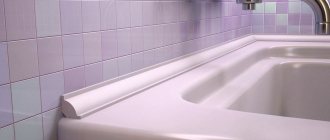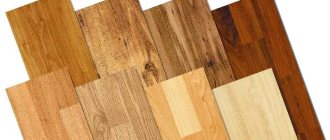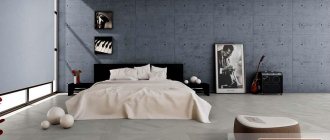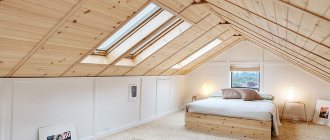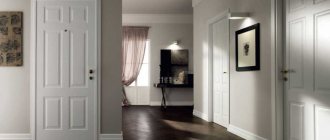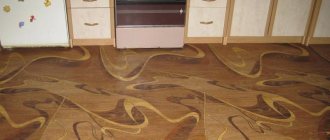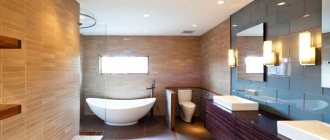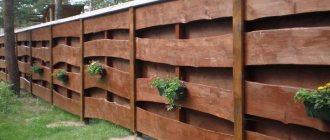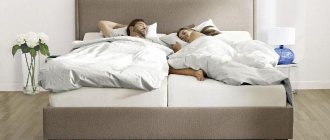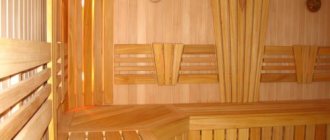The use of skirting boards in the interior has a long, centuries-old history. It is impossible to imagine a modern house or apartment without the use of floor and ceiling fillets. These elements are not only practical, but also aesthetic, they add completeness and help in adjusting the visual perception of the space of the room. White plinth in the interior is well suited for many design solutions and is very popular with most decorators.
Light white plinth in design
Wall with white plinth
White plinth in the interior
The role of baseboards in the interior of a room
One of the finishing touches in the renovation is the installation of fillets. Many people think that they are used for only one purpose - to close the joints between walls and the floor or ceiling. In fact, it has much more functions.
Practical functions:
- closes gaps and joints between walls and floor or ceiling;
- is a holder for floor coverings, for example, linoleum or carpet;
- becomes a cable channel for laying wires.
- The “boot” is needed to prevent the appearance of dirt on the lower parts of the walls.
Installation of fillets for decorative purposes is widely used in the renovation of apartments and houses. Various types, colors, shapes and materials allow you to give the interior a finished look or add a touch of special design.
Wall with white plinth
Light white plinth in design
See also: Benefits of white interior.
How to choose a plinth
Today, there are various types of fillets on the construction market. They differ from each other in many parameters, for example, by location, material, purpose and other parameters. We will find out which one is better to choose further in our article.
Floor fillets are made of wood, plastic or MDF. Before the appearance of plastic products on the market, the most common were wooden fillets. They have not lost their relevance even now. Wood is the most environmentally friendly material, its service life is from 15 to 25 years. For production, they usually take solid spruce, cedar or pine. Such products can be coated with varnish or stain, as well as painted in any color depending on the overall color scheme.
White plinth in the interior
Wall with white plinth
Light white plinth in design
They are used to frame floors covered with laminate or parquet, as well as natural boards. The price is usually higher than for plastic products, which has led to a decline in popularity in recent decades.
Plastic - easy to install. Even a beginner can handle attaching them. The weight of such products is light; plugs, corner joints and connections are sold complete with them. The color range is presented in a wide range, everyone can choose the color and texture at their discretion. There is no need for painting or special care, unlike wooden ones. In addition, internal channels allow wiring to be laid out and thereby create additional order. As for the disadvantages, we can note low strength and low durability; any blow can provoke cracks and breaks. Such panels are practical for floors covered with laminate, ceramic tiles, linoleum, carpet; they should not be used for parquet or wooden boards.
Those made from MDF are easy to maintain, do not attract dust, are quite inexpensive, but, like plastic ones, are not very durable. They are afraid of moisture; if there is excess humidity, they become deformed and require replacement.
Metal - rarely used, made of aluminum or stainless steel, more often used in rooms with high humidity and a high probability of contamination. In modern apartments they are installed in bathrooms, kitchens and hallways.
White plinth in the interior
Wall with white plinth
The floor profile has a height of 5 to 10 cm, the most popular being 6 cm. It allows you to close all joints and does not visually reduce the height of the walls. Wide 8-10 cm skirting boards in the interior are usually made of plastic and used in large rooms with high ceilings. It gives majesty. Its surface can be either smooth or decorated with protrusions, legs or patterns. The internal design may include ducting for wires and even heating systems.
Ceiling profiles are designed to hide the joints between the ceiling and walls; in addition, they allow you to complete the design, visually control the area and give a special style.
Ceiling moldings have a long history; the palaces of monarchs were decorated with gypsum stucco moldings for many centuries; later, similar, but less massive stucco moldings appeared in apartments built during Stalin’s era. With the advent of planned and uniform construction in our country, stucco moldings were abandoned for many years. Modern designers again turned to stucco moldings and moldings 10-15 years ago and again returned them to their former popularity.
Light white plinth in design
White plinth in the interior
Wall with white plinth
Ceiling fillets are made from various materials, the cheapest being polystyrene foam. Foam stucco moldings can be purchased at any hardware store at very low prices, however, they have a number of disadvantages. They are very fragile, even a slight pressure can leave a dent on them. They must be additionally coated with putty and painted, otherwise they will absorb dust and become dirty very quickly. Due to their fragility, they cannot be washed, and they are also short-lived.
Expanded polystyrene fillets are not much more expensive than those made of polystyrene foam. Their main difference is that they are durable and at the same time quite flexible; they are usually made in white and do not require additional painting.
Light white plinth in design
White plinth in the interior
Wooden ceiling moldings belong to the expensive segment, and not everyone can afford them. They are very heavy, so their installation is quite labor-intensive; all joints must be sawed by hand, and even minor mistakes can ruin the appearance. They are also susceptible to rotting and fungi, and with high humidity they quickly become unusable.
Decorative baguettes, stucco moldings and fillets are most often used in design solutions for wall decoration. For these purposes, they are usually made of polyvinyl chloride, they are decorated with decorative elements or embossing, and can be convex or concave. Such fillets are excellent for decorating frames, wall niches, and are used when working with wall panels and ceramic tiles.
A variety of colors and textures allows you to embody even the most daring design ideas.
Wall with white plinth
Light white plinth in design
White plinth in the interior
See alsoWhite laminate in the interior
By material
Depending on the quality of the floor covering, you should choose the material for the plinth. If you have expensive laminate flooring in your room, you can combine it with a wooden baseboard. If the flooring is of average quality or even below average, then there is no point in laying a wooden plinth; in this case, it is quite possible to get by with its analogue made of MDF, veneered wood or PVC (plastic).
The times when baseboards were of one shape, color and size are a thing of the past. A wide range of skirting boards are available on the modern market from different materials, differing in shape, color and texture.
Wooden floor plinth
The most environmentally friendly material is wood. Skirting boards made from this material have a presentable appearance, are easy to install, and do not require special care. The material is sensitive to changes in moisture, so it cannot be installed in rooms with high humidity. The most cost-effective plinth is made from pine. Oak and linden are more expensive, but they also look more noble. Wooden skirting boards are sold without a varnished coating, which makes it quite difficult to determine the final color. To get an approximate idea of the color of the varnished plinth, run a wet sponge over the wood. This shade will look like a varnished baseboard.
Solid oak plinth
The basis of the veneered plinth is spruce or pine. Veneer or a thin plate of noble wood is glued to the finished form under the influence of temperature. It can be acacia, oak, walnut, pear, bamboo, etc. Such products are produced with a cable channel, which allows you to hide the wires under them.
Veneered
If the walls in your house are finished with MDF panels and the floor is covered with laminate, then it is best to choose MDF baseboards. They are made from compressed wood fibers and binders. Such products are not afraid of dirt and moisture, they do not fade in the sun.
MDF plinth
The most budget option is PVC. The range of plastic skirting boards is very wide. Thanks to this, everyone can choose the appropriate option in shape and color. Among the advantages, it is worth noting resistance to moisture, corrosion and rotting, however, the strength of the material leaves much to be desired.
PVC
Today they also produce polyurethane skirting boards, which are particularly flexible.
Polyurethane floor
If you choose baseboards for laminate in accordance with the characteristics of the room, the flooring itself and the cost of the material, then your renovation will be completed on time, and the end result will delight you and your guests. Do you have any questions on the topic or just want to comment on the article? Then we are waiting for your questions and comments.
Interior solutions
Examples of white ceiling and floor plinths in the interior are increasingly found in designer projects. Where such finishing is appropriate and what it is combined with, we will look further.
A white floor plinth in the interior in combination with dark walls or floors gives clarity, delimits the space and indicates a certain rigor. This color for the floor profile will be an ideal solution for apartments in a classic style. It will go well with a white door and give an elegant look.
White fillets are often installed in bright rooms, for example in Swedish style. They go well with light shades of the floor and walls, visually enlarge the space without focusing on clear lines.
Light white plinth in design
Wall with white plinth
The visual perception of the room depends on the width of the white plinth in the interior; if the white color is contrasting with the walls and floor, you need to pay attention to the area and height of the walls. In small, narrow rooms with low walls, you need to select low ones, this will ensure the preservation of space and will not reduce it. If the room is large and the walls are high, you can use a wide white baseboard.
For rooms in light colors, white plinth of any width can be used, since it will not introduce restrictions on the visual perception of the interior.
The combination of white baseboards and white doors is classic. But to dilute such a light design, it is necessary to introduce color contrasts. For example, the color of the walls or floor, or bright decorative elements: furniture, accessories, panels and paintings on the walls.
Light white plinth in design
White plinth in the interior
Wall with white plinth
For the ceiling, most often they resort to white baguettes. Depending on the interior solutions, their width and design vary. Thin white skirting boards are suitable for modern style solutions. If you want to give your room a classic look or embody the Baroque style, you can safely install wide white skirting boards with or without ornaments.
Colored ceiling moldings are rarely installed, since they must be completely combined with the color of the walls or ceiling, unless you plan to change them every time you change the wallpaper or paint the walls, it is better to avoid colored options.
Light white plinth in design
White plinth in the interior
See also Stucco molding in the interior, photo.
Five rules for the bright side of white baseboards
When using a white baseboard, you should remember the following rules.
- It should not only be aesthetically beautiful, but also practical. Choose materials that are easy to clean and do not absorb dirt and dust.
- The color should be in harmony with other colors in the decoration or become a contrast; you should not choose a white baseboard if it does not match the color of the walls, floors and doors.
- Think about the functional features; if you need to hide wires from view, choose fillets with cable channels.
- Select the material from which the white plinth is made depending on the floor covering.
- A white baseboard should not reduce the space of the room; pay attention to its width and choose based on the height of the walls and area.
See also Bleached oak in the interior, photos of color solutions.
Skirting color
It is optimal to choose a plinth in the same store where you purchase the laminate. After all, collections of skirting boards are often produced to match the existing laminate. Although you can choose laminate and baseboard separately.
There are two ways to choose the color of the skirting boards:
- To match the floor;
- Opposite color.
The first option is classic and is based on the use of plain materials. Light colors are suitable for expanding the space, but such floors will be too dirty.
For dark laminate tones, you can also purchase baseboards to match. If you have to choose skirting boards from a store other than the one where you purchased the laminate, it is better to take a sample with you for comparison. This will allow you to choose the perfect combination of texture and color.
The second way is innovative and is based on using maximum contrast in the room. It is most often used for renovations in the Art Nouveau style.
The essence of this method is the combination of light floors and dark baseboards - not the other way around. Thus, against the background of a light floor there is a dark baseboard, matched to the color of the furniture and doors, which creates a bright contrast.
